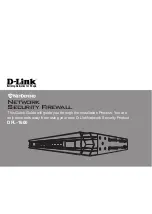
36
Relay agent option (Option 82)
Option 82 is the relay agent option. It records the location information about the DHCP client. When
a DHCP relay agent or DHCP snooping device receives a client's request, it adds Option 82 to the
request and sends it to the server.
The administrator can use Option 82 to locate the DHCP client and further implement security control
and accounting. The DHCP server can use Option 82 to provide individual configuration policies for
the clients.
Option 82 can include up to 255 sub-options and must have one sub-option at least. Option 82
supports two sub-options: sub-option 1 (Circuit ID) and sub-option 2 (Remote ID). Option 82 has no
standard definition. Its padding formats vary by vendor.
•
Circuit ID has the following padding modes:
{
String padding mode
—Includes a character string specified by the user.
{
Normal padding mode
—Includes the VLAN ID and interface number of the interface that
receives the client's request.
{
Verbose padding mode
—Includes the access node identifier specified by the user, and
the VLAN ID, interface number and interface type of the interface that receives the client's
request.
•
Remote ID has the following padding modes:
{
String padding mode
—Includes a character string specified by the user.
{
Normal padding mode
—Includes the MAC address of the DHCP relay agent interface or
the MAC address of the DHCP snooping device that receives the client's request.
{
Sysname padding mode
—Includes the device name of the device. To set the device name
for the device, use the
sysname
command in system view.
Option 184
Option 184 is a reserved option. You can define the parameters in the option as needed. The device
supports Option 184 carrying voice related parameters, so a DHCP client with voice functions can
get voice parameters from the DHCP server.
Option 184 has the following sub-options:
•
Sub-option
1
—Specifies the IP address of the primary network calling processor. The primary
processor acts as the network calling control source and provides program download services.
For Option 184, you must define sub-option 1 to make other sub-options take effect.
•
Sub
-
option
2
—Specifies the IP address of the backup network calling processor. DHCP clients
contact the backup processor when the primary one is unreachable.
•
Sub
-
option
3
—Specifies the voice VLAN ID and the result whether the DHCP client takes this
VLAN as the voice VLAN.
•
Sub
-
option
4
—Specifies the failover route that includes the IP address and the number of the
target user. A SIP VoIP user uses this IP address and number to directly establish a connection
to the target SIP user when both the primary and backup calling processors are unreachable.
Protocols and standards
•
RFC 2131,
Dynamic Host Configuration Protocol
•
RFC 2132,
DHCP Options and BOOTP Vendor Extensions
•
RFC 1542,
Clarifications and Extensions for the Bootstrap Protocol
•
RFC 3046,
DHCP Relay Agent Information Option
•
RFC 3442,
The Classless Static Route Option for Dynamic Host Configuration Protocol (DHCP)
version 4
















































